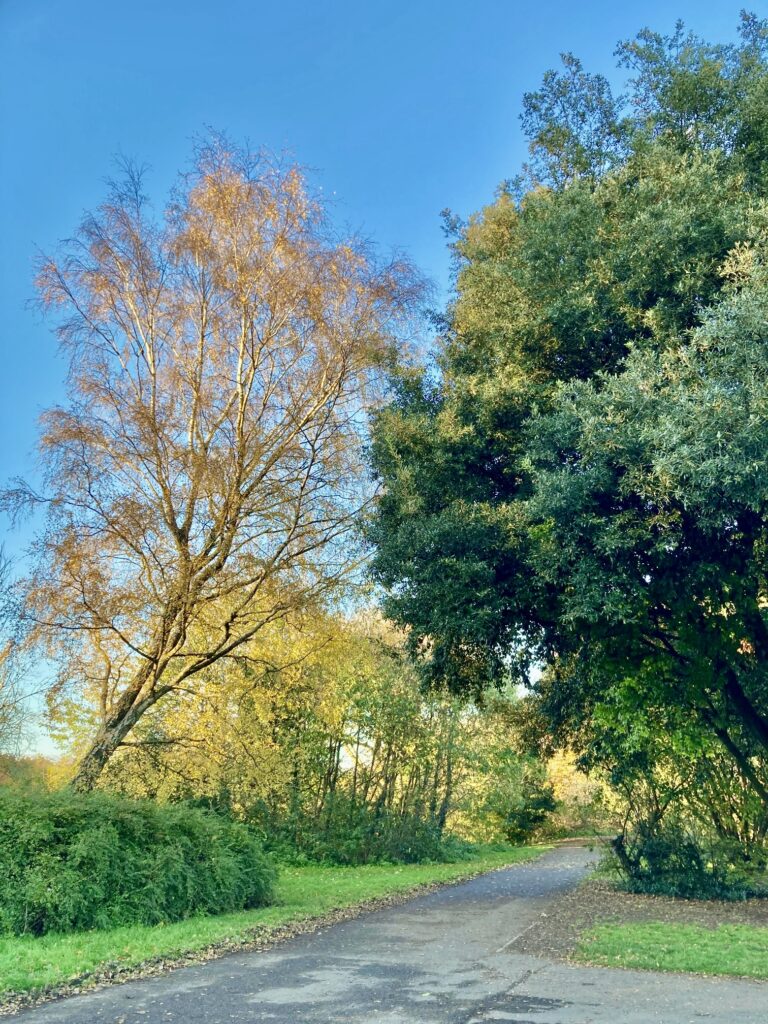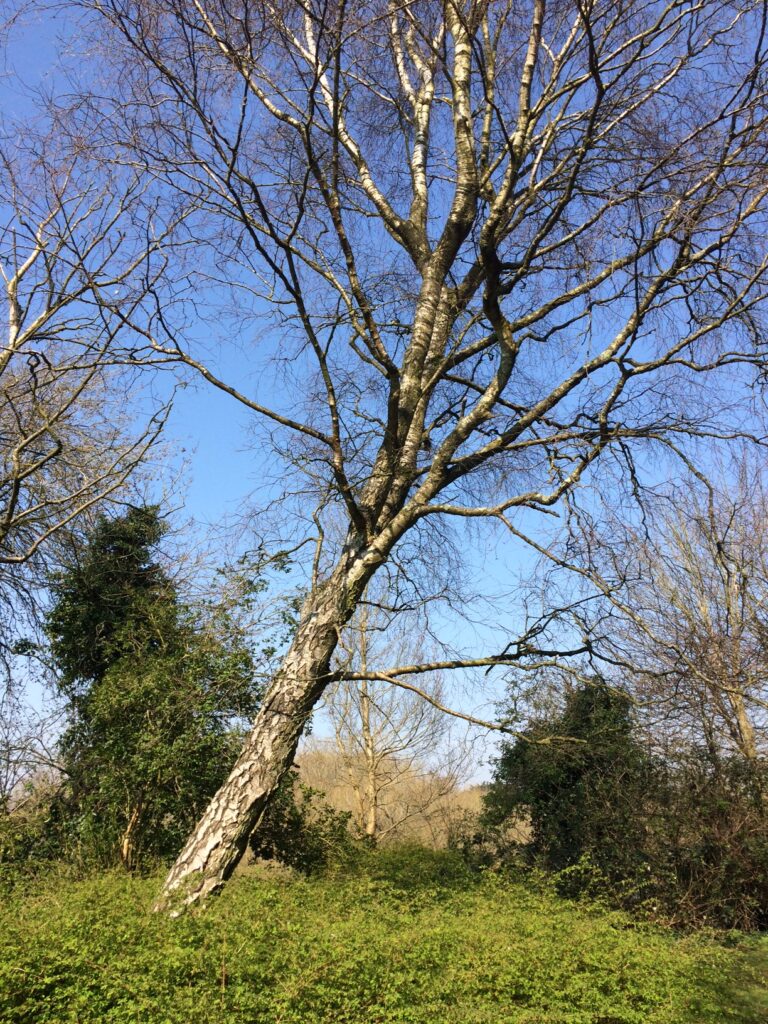What3Words Reference: dating.snow.public
Location notes: by junction of paths with label, near Holm Oak
Silver birch is a medium-sized deciduous tree reaching 30m in height, with a light canopy with elegant, drooping branches. The white bark sheds layers like tissue paper and becomes black and rugged at the base.
The leaves are light green, small and triangular-shaped with a toothed edge, which fade to yellow in autumn.
Silver birch has both male and female flowers (catkins) on the same tree, from April to May. Male catkins are long and yellow-brown in colour like lambs’ tails. Female catkins are smaller, short, bright green and erect. After pollination female catkins change colour to a dark crimson. Masses of tiny seeds are dispersed by the wind in autumn.
Wild flowers and mosses can grow below the open canopy. Birches provide food and habitat for more than 300 insect species – the leaves attracting aphids which provide food for ladybirds etc. Caterpillars of many moths also feed on the leaves. Certain fungi are particularly associated with sbirch trees including fly agaric, chanterelle and others.
Woodpeckers and other hole-nesting birds often nest in the trunk, while the seeds are eaten by siskins and greenfinches.
Birch wood is hard wearing and heavy, making it suitable for furniture production, handles and toys.
Click Tree Trail to return to the full list
The delicate, leaning tree on the left is the Silver Birch; it is opposite the Holm Oak


